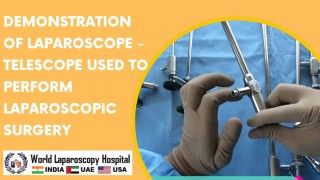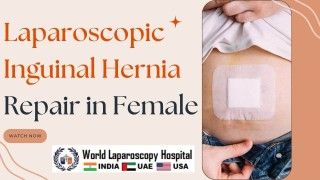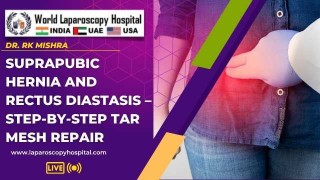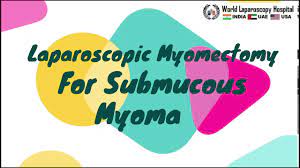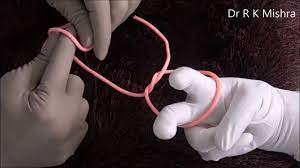Mastering Complexity: Conquering Difficult Total Laparoscopic Hysterectomy with Precision and Skill
Add to
Share
1,732 views
Report
2 years ago
Description
Introduction: Total laparoscopic hysterectomy (TLH) is a minimally invasive surgical procedure for the removal of the uterus. While TLH is generally a safe and effective technique, certain cases present complex challenges that require advanced skills and strategies to navigate successfully. This essay explores the intricacies involved in managing difficult TLH cases and highlights the approaches utilized to overcome surgical complexity. Understanding Difficult Total Laparoscopic Hysterectomy: Difficult TLH refers to cases in which anatomical variations, severe adhesions, enlarged uterus, or previous abdominal surgeries make the procedure technically demanding. These complexities can pose increased risks, prolonged operative times, and potential complications. Surgeons must possess expertise in advanced laparoscopic techniques and be prepared to adapt their approach to address the specific challenges encountered. Preoperative Evaluation and Planning: Thorough preoperative evaluation is crucial in identifying factors contributing to the surgical complexity. This includes assessing patient history, evaluating the uterus's size and condition, and investigating any potential pelvic adhesions or pathology. Imaging studies, such as ultrasound or magnetic resonance imaging (MRI), aid in understanding anatomical variations and guide surgical planning. Strategies for Surgical Success: To navigate the challenges of difficult TLH, surgeons employ several strategies: Advanced laparoscopic techniques: Surgeons skilled in advanced laparoscopy utilize refined surgical techniques, such as meticulous dissection, precise tissue handling, and strategic use of energy devices. This expertise allows for safe and efficient removal of the uterus, minimizing blood loss and reducing the risk of complications. Adhesiolysis and tissue mobilization: In cases where severe adhesions are present, careful adhesiolysis is performed to separate adhered tissues and facilitate visualization and dissection. Tissue mobilization techniques, such as uterine manipulators or uterine morcellation, may be employed to aid in the removal of an enlarged uterus. Team collaboration and expertise: Complex TLH cases benefit from a multidisciplinary approach involving gynecologic surgeons, anesthesiologists, and nursing staff with experience in managing intricate laparoscopic procedures. Collaboration ensures comprehensive preoperative assessment, meticulous intraoperative care, and vigilant postoperative monitoring. Intraoperative decision-making and flexibility: Surgeons must be prepared to adapt their surgical plan based on intraoperative findings. This may include converting to an open procedure, if necessary, to ensure patient safety and optimal surgical outcomes. Difficult total laparoscopic hysterectomy presents a unique set of challenges that require advanced surgical skills and careful planning. This description explores the complexities involved in performing this procedure and highlights the strategies employed to overcome the surgical hurdles. Difficult total laparoscopic hysterectomy refers to cases where anatomical variations, severe adhesions, or an enlarged uterus make the surgery technically demanding. Surgeons face increased risks and potential complications, necessitating specialized techniques and expertise. Preoperative evaluation, including patient history and imaging studies, aids in identifying factors contributing to the surgical complexity. Successful outcomes in difficult cases of total laparoscopic hysterectomy rely on several strategies. Surgeons proficient in advanced laparoscopic techniques utilize precise dissection, meticulous tissue handling, and strategic energy device usage to safely remove the uterus while minimizing complications and blood loss. Adhesiolysis, the separation of adhered tissues, and tissue mobilization techniques may be employed to overcome severe adhesions or facilitate the removal of an enlarged uterus. Collaboration among the surgical team, including gynecologic surgeons, anesthesiologists, and nursing staff experienced in complex laparoscopic procedures, is essential. This multidisciplinary approach ensures comprehensive preoperative assessment, meticulous intraoperative care, and vigilant postoperative monitoring. During the surgery, intraoperative decision-making and flexibility are crucial. Surgeons must be prepared to adapt their surgical plan based on intraoperative findings, including the option to convert to an open procedure if necessary, to prioritize patient safety and optimal outcomes. In summary, difficult total laparoscopic hysterectomy demands advanced surgical skills, careful preoperative planning, and adaptable decision-making. Surgeons must possess expertise in advanced laparoscopic techniques and collaborate closely with a skilled surgical team. With these approaches, surgeons can navigate the complexities of difficult cases, providing patients with the benefits of minimally invasive surgery while ensuring the best possible outcomes and patient safety. Conclusion: Overcoming the challenges of difficult total laparoscopic hysterectomy requires a combination of surgical expertise, careful preoperative planning, and adaptable intraoperative decision-making. Surgeons must possess advanced laparoscopic skills and be well-versed in managing complex cases involving anatomical variations, severe adhesions, or enlarged uteri. With meticulous techniques, collaboration among a skilled surgical team, and the ability to adapt as needed, surgeons can successfully navigate the complexities of difficult TLH, offering patients the benefits of minimally invasive surgery while ensuring optimal outcomes and patient safety.
Similar Videos

